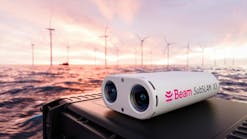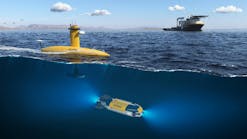EQUIPMENT/ENGINEERING: Heat/electrical charged alloy changes shape, creating hydraulic force
Developers have created an alloy metal that exhibits a "shaped memory response" in the presence of heat or electrical stimulation, and could conceivably power subsea valving or other short-stroke operations. The metal is being used in a device known as a "SmartRam," developed by Linear Motion Industries (LMI) of Houston.
The developers claim the ram alloy has high shape repeatability and a powerful short stroke, and could "eliminate more than 80% of the traditional problematic plumbing support for hydraulically actuated controls (electric motor pumps, hydraulic tanks, umbilicals and hoses, filters, accumulators, connectors, and fluid logic).
The shape memory alloy, under the presence of a controlled amount of heat, whether direct or electrically induced, changes shape. The shape change is repeatable to the exact position if the heat charge is unchanged. The force induced is not unlike that induced by hydraulic valving.
Phased testing
LMI is moving into Phase I testing for the device and reportedly has recruited interested companies in undertaking applications for it. According to the developers, the shape memory alloy is already being used in military applications. The three phases of testing for the technology involve the following:
- Phase I - Detailed focus and impact analysis by engineering. All application areas will be studied.
- Phase II - Design and build for marine environments and test or banchmark several units, while assessing benefits, obstacles, and concerns.
- Phase III - Redesign and build a number of units for deployment to Alfa and Beta testing sites, followed by the preparation of economic summaries.
Retrofitting to existing sites will be examined in later phases. Among the applications the developers are viewing are subsea safety valves, chemical injection units, and remotely controlled vehicle tooling.
The logic behind the injection applications focus, according to the developers, is as follows: "The majority of subsea well controls are of the high pressure hydraulic type, with a history of very costly downtime. Chemical injection systems are similar. These systems use centralized topside power and a complex hydraulic plumbing network to eventually power critical final actuators and chemical injectors on the seafloor.
"Equipment costs for high pressure hydraulic/injection umbilicals can run in the $ millions per mile, and sometimes exceed 30 miles. Problems with controls occur because a parts failure in the complicated hydraulic chain can cause a critical system shutdown, sometimes lasting as long as 30 days to correct, with expenses up to $1 million/day. Problems with injection systems occur because centralized high pressure injection results in inaccurate costly overdosing."
LMI feels the shape memory alloy can overcome many of these problems, because the technology is impervious to high pressure and corrosive environments, and can be designed for "plug and play" situations.




